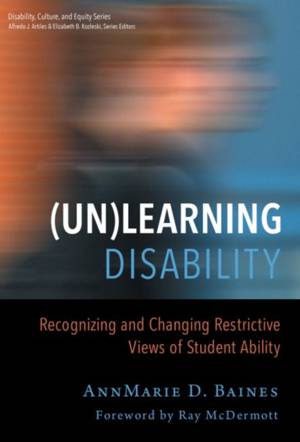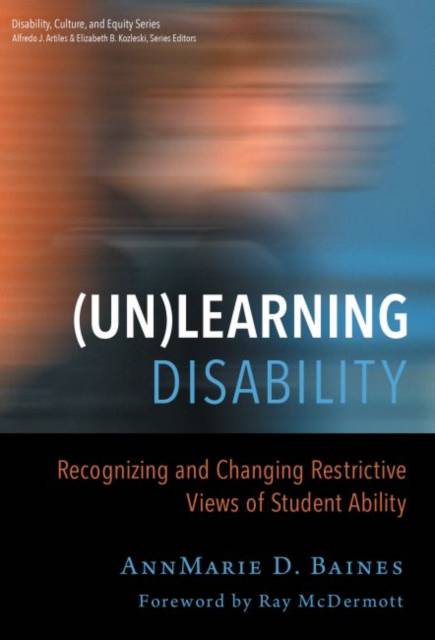
- Afhalen na 1 uur in een winkel met voorraad
- Gratis thuislevering in België
- Ruim aanbod met 7 miljoen producten
- Afhalen na 1 uur in een winkel met voorraad
- Gratis thuislevering in België
- Ruim aanbod met 7 miljoen producten
(Un)Learning Disability
Recognizing and Changing Restrictive Views of Student Ability
Annmarie D BainesOmschrijving
How do high school students confront and resolve conflicting messages about their intelligence and academic potential, particularly when labeled with social and learning disabilities? How does disability become "disablement" when negative attitudes and disparaging perceptions of ability position students as outsiders? Following the lives of adolescents at home and at school, the author makes visible the disabling language, contextual arrangements, and unconscious social practices that restrict learning regardless of special education services. She also showcases how young people resist disablement to transform their worlds and pursue pathways most important to them. Educators and scholars can use this important resource to recognize and change disabling practices that are often taken for granted as a natural part of schooling.
Book Features:
- Offers concrete ways that students, schools, and teachers can unlearn disabling behaviors.
- Illuminates how social processes of disablement take place, rather than simply describing their influence.
- Looks at settings where students encounter more flexible ideas of ability and intelligence.
Specificaties
Betrokkenen
- Auteur(s):
- Uitgeverij:
Inhoud
- Aantal bladzijden:
- 192
- Taal:
- Engels
- Reeks:
Eigenschappen
- Productcode (EAN):
- 9780807755365
- Verschijningsdatum:
- 7/03/2014
- Uitvoering:
- Paperback
- Formaat:
- Trade paperback (VS)
- Afmetingen:
- 155 mm x 226 mm
- Gewicht:
- 272 g

Alleen bij Standaard Boekhandel
Beoordelingen
We publiceren alleen reviews die voldoen aan de voorwaarden voor reviews. Bekijk onze voorwaarden voor reviews.












